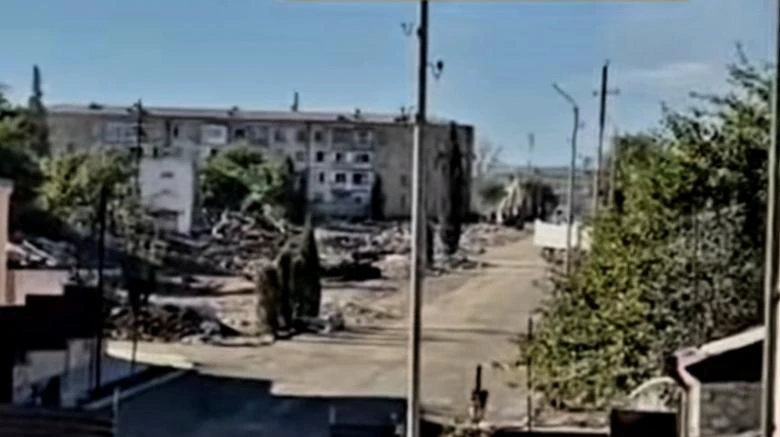The website monumentwatch.org, which monitors Artsakh's cultural heritage, writes:
"The Azerbaijani side demolished the historical district in the center of Stepanakert, whose houses were built at the end of the 19th and the beginning of the 20th century. The houses were mostly one story, some two stories, built of local white limestone. At the end of the 19th century, due to the revitalization of economic life, the settlement was significantly reconstructed and developed according to the regular principles of urban planning in Shushi. The houses of the historical district of Stepanakert city have an obvious resemblance to the historical houses of Shushi. Most of the houses were built by Armenian residents. By destroying the historical core of Stepanakert, the Azerbaijani side is erasing the Armenian past of the city. It should be noted that at the end of 2023, in one of his speeches, the President of Azerbaijan, Ilham Aliyev, made a special reference to the past of Stepanakert, naturally distorting it. Our reaction According to the decision of the International Court of Justice, customary laws are mandatory for all states and prohibit the willful destruction of heritage, in violation of international humanitarian law 38. , https://heritage.sensecentar.org/assets/home/sg-7-06-icrc-ihl.pdf with rules 39, 40 and 41. The deliberate destruction of the historic houses of Stepanakert also violates Article 8 of the Rome Statute and is considered a serious crime against humanity. It also violates the binding decisions of the International Court of Justice in The Hague. The damage done to the city according to the 1954 Hague Convention on the Protection of Cultural Property in Armed Conflict. of Article 4 of the Convention and additionally, 1999 Article 15(a) of the adopted Second Protocol is a "serious violation" which, as a war crime, can be prosecuted in international courts. The destruction of the historical district can also be described as genocide, because today the issue of genocide is also considered in the context of attacks on cultural heritage. The manual for examining the cultural heritage provisions of the Rome Statute states: "Crimes against or affecting cultural heritage are often associated with or committed as part of genocide, accompanied by acts of total or partial physical destruction of group members." In addition, crimes against cultural heritage, which occur together with other physical or biological acts against a group, can be evidence of a specific intent to commit genocide."


























